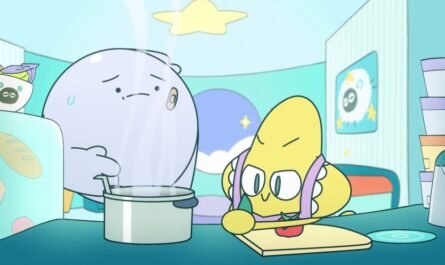Dog lovers beware
Among the many anime movies released yearly, there are masterpieces for everyone and shocking works that depict intense erotic and grotesque depictions and hopeless situations. We look back on the unexpectedly scary theatrical versions of popular series and cult films that are hard to see.
“Doraemon: Nobita and the Tin Labyrinth.” The “Doraemon” anime series, which has been released during spring break since 1980 and attracts many audiences, has some “traumatic works” that have a substantial impact on children. “Doraemon: Nobita and the Tin Labyrinth,” released in 1993, is one of them, and it has many scary elements, such as the plot in which “Doraemon” is kidnapped by the enemy and destroyed after torture and the ominous atmosphere of the “Brick Hotel” where there is no sign of any living thing. When you think of “Doraemon,” the standard story is that “Nobita” immediately relies on Doraemon and causes trouble with his “secret gadgets.”
However, in this film, Nobita and the other four must rescue Doraemon without his secret gadgets, which is also quite scary. Also, at the climax, the mastermind “Napogistler I” is infected with a virus, causing bugs in the robot army and causing them to stop functioning while singing and dancing to the “Itomaki no Uta.” This scene is still talked about today, and on social media, there were comments such as “I saw it on TV when I was little, and it was terrifying,” and “It’s creepy how the bug spreads little by little and makes them go crazy.”
“Underground Lantern Drama: Girl Tsubaki” “Girl Tsubaki,” a masterpiece by Maruo Suehiro, was originally from the magazine “Garo,” which mainly published underground manga. It was made into an animated film in 1992.
This film was originally shown at events, not in theaters, and has never been broadcast on terrestrial television, released on DVD, or streamed, making it very limited to watch. When it was shown at an event, it was decorated to resemble a freak show, and confetti and smoke were used, and attendees well received it.
The film features strong erotic and grotesque depictions, with the protagonist “Midori-chan” being taken in by a freak show and being oppressed by strange performers. For example, in the scene where the performer “Kanabun” kills the puppy that Midori had secretly kept at the shrine, the dog is slammed to the ground and crushed vividly.
Furthermore, Kanabun serves dog stew for dinner. When Midori sheds tears, realizing it is her beloved dog, he encourages her by saying, “It’s so delicious that I started crying.” The Kanabun’s brutal deeds have drawn comments such as, “It will be traumatic for dog lovers,” and “There are other tough scenes, but it’s too realistic, and I would never show this to children.”
“Phoenix: Phoenix Chapter” One of Tezuka Osamu’s masterpieces, “Phoenix” was released as an animated film in 1986. The “Phoenix Chapter” depicts human life and death on a grand scale, focusing on “Gao,” who will even kill someone to survive, and “Akanemaru,” a traveling Buddhist sculptor.
Many people recommend this as one of the best episodes in the series. Akanemaru, who had his precious right arm injured by a thief for a highly unreasonable reason, has developed his talent as a carver after intense training. He is ordered to compete with a shabby monk to create a carving to present to the emperor.
Akanemaru learns that the monk is Gao, the bandit who once injured his arm. When he is about to lose, he complains about Gao’s past crimes and asks for his arm to be cut off. Unlike the original, which only shows Gao groaning after his arm is chopped off in one frame, the animated film vividly depicts Gao’s severed right arm rolling around, as well as Gao leaving the mansion with blood flowing from his wound.
There is also a shocking scene where Akanemaru chuckles as he sees Gao’s breathless back. When Akanemaru is surrounded by the fire with the Phoenix statue he made, the Firebird appears out of nowhere and tells him that he will soon die and be reborn as a small fish. The Firebird confronts Akanemaru, who longs to be a human in the afterlife, with the cruel truths that the Firebird presents, which may leave viewers traumatized.











